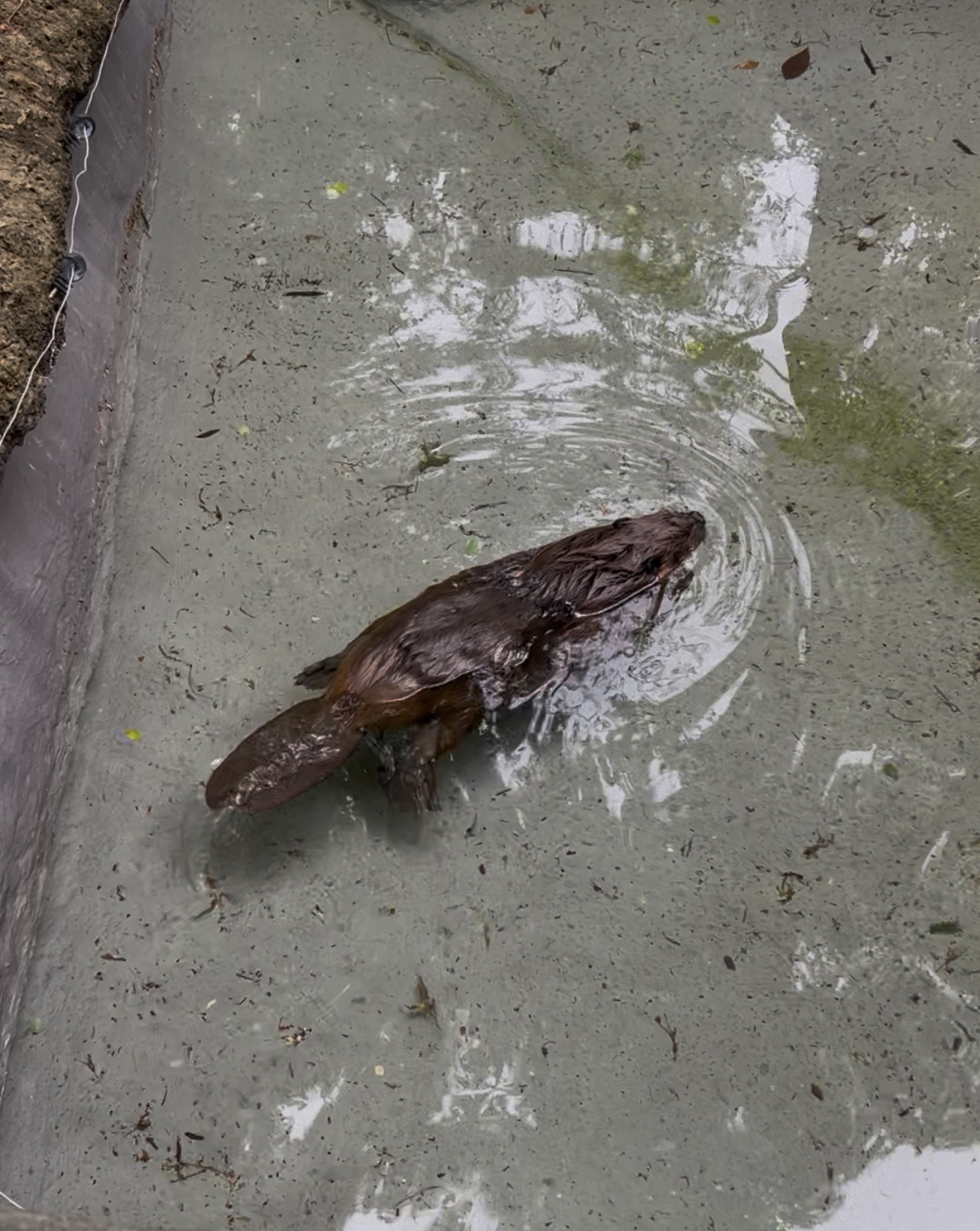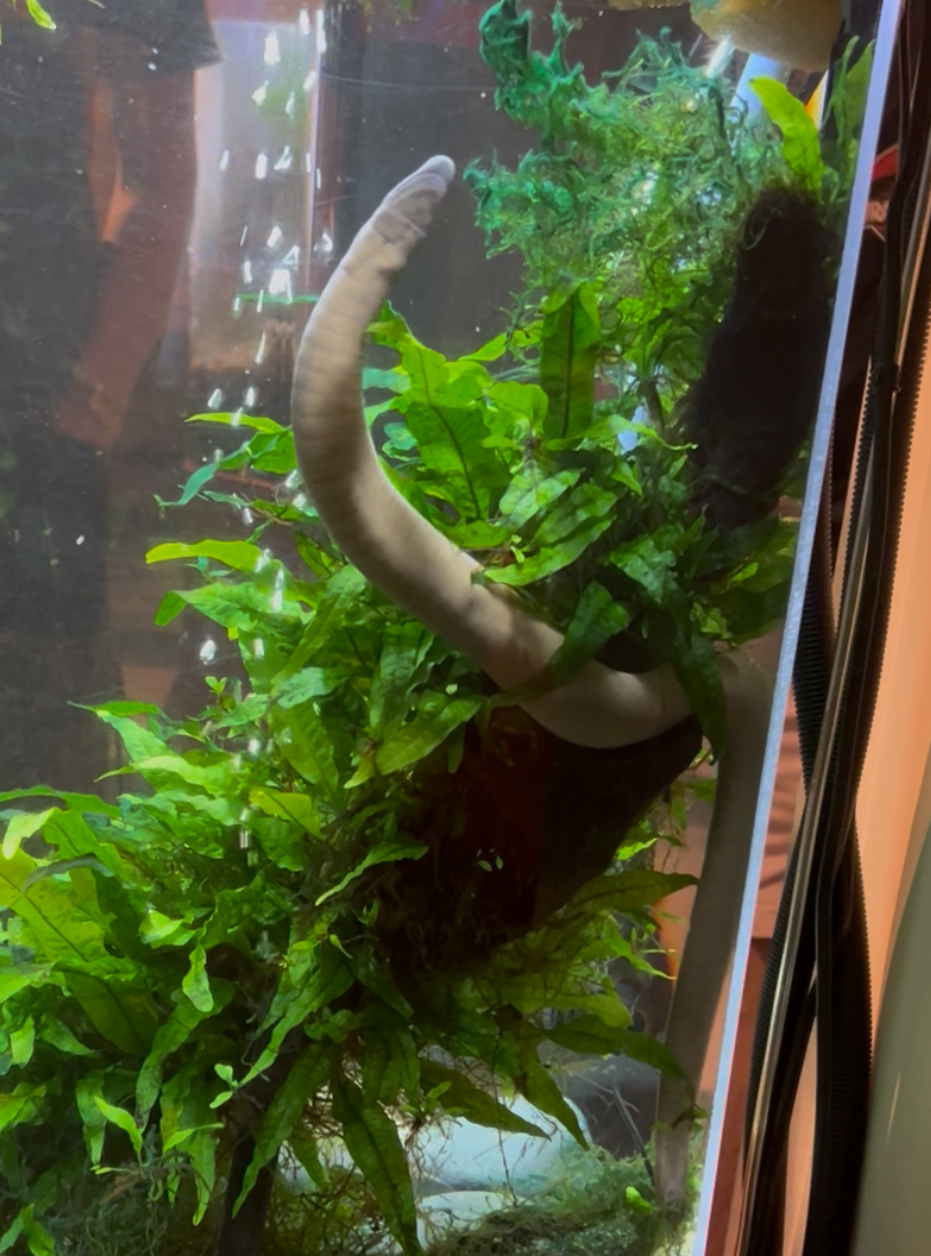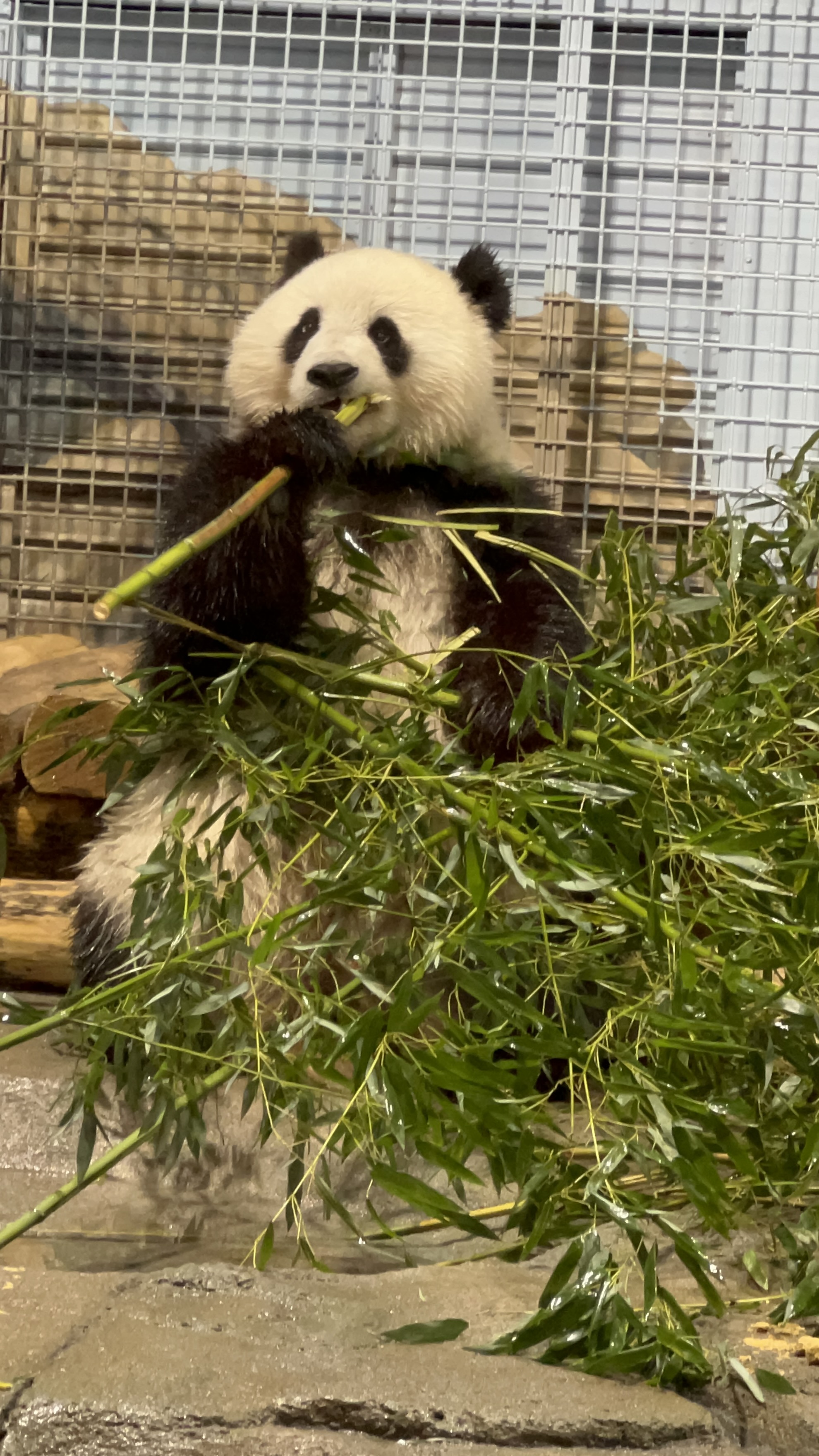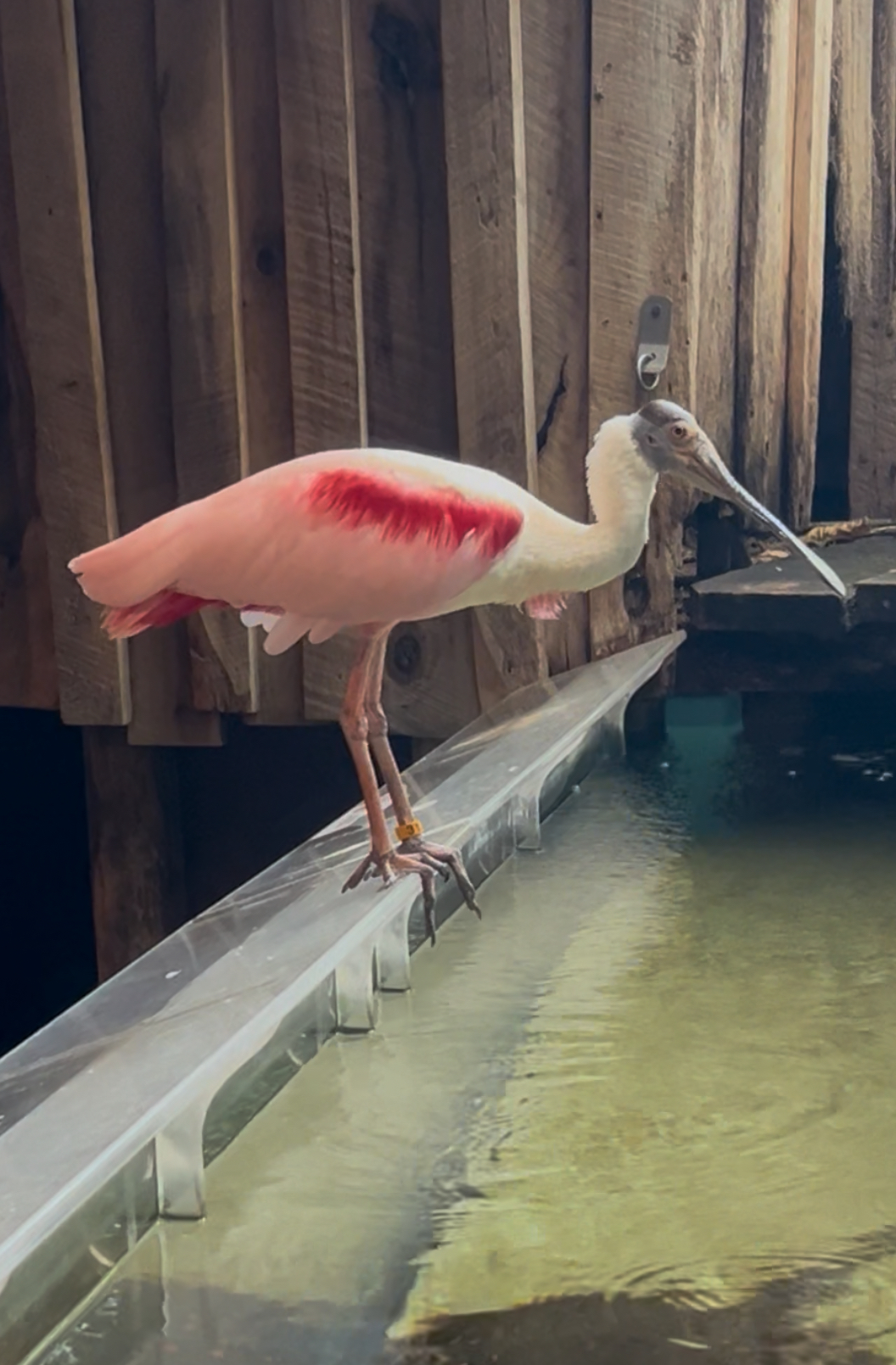National Zoo Excursion
May 4, 2025 at the Smithsonian National Zoological Park
For our excursion, we decided to go to the Amazonia and the Bird House. Our first step was to head to the Bird House, where we encountered many different species on display. In general, across all the exhibits, the height, weight, and unique features of each species was described in detail, as well as the parts of the country that they could be found in.
For the Bird House exhibit, we saw the American flamingo, the barred owl, the kori bustard, and the whooping crane. The American flamingo is one of the largest species of flamingo, and they're incredibly social. According to the plaque, the pigment in their food is what gives them their unique coloring, and they can be found in the Carribena and along the northern coast of South America. As for the barred owl, we learned that they're one of North America's most common and vocal owls. They have large brown eyes, which makes them unique since most owls have yellow eyes. Normally, they are distributed throughout Canada and the United States, with a small population in Mexico as well. Another bird that caught our eye was the kori bustard, which are the world's heaviest flying bird. They live in grasslands and savannas in eastern and southern Africa. Additionally, they only have three front toes, which are well suited for running. Finally, we saw the whooping crane, which are native to North America. They were once faced with extinction, but with the help of conservation science efforts, their population is slowly making a comeback. We also learned that the whooping cranes are the tallest birds in North America, standing at 5 feet tall. There weren't a lot beyond identifying text on a panel available in the panel, since the main draw of the exhibit was that the birds would be in open exhibits, free to fly around the area as they please. The hall seemed to be aimed towards people of all ages, with text that was easily understood by kids and adults alike. However, it didn't seem like people really stopped to carefully look at the information plaques, and were mainly drawn to the display of species. However, I think it may be due to the fact that a bulk of the information wasn't displayed on plaques in the exhibit itself, but rather in laminated sheets that were near the entrances and exits.
At the Amazonia, we saw corals, Panamanian golden frogs, aquatic caecilian, and the roseate spoonbill. We learned that the coral reefs are currently threated by rising water temperatures and ocean acidification, which is linked to rising carbon dioxide levels. High water temperatures cuse corals to lose the algae that produce the food corals need, which gives way to the condition known as coral bleaching. Coral reefs rival rainforests in diversity of life, and they hold the most diverse ecosystems on the planet together. We also saw the Panamanian golden frogs, which were referred to by The Sixth Extinction: An Unnatural History, by Elizabeth Kolbert. These frogs are native to the rainforests and cloud forests of Pananama, but have been driven to extinction in the wild by chytridiomycosis, a disease caused by a fungal pathogen called the amphibian chytrid fungus. Another specimen that drew our attention was the aquatic caecilians, also known as rubber eels, which are found in Colombian and Venezuelan lowland rivers and streams. They're the third type of amphibians, other than frogs and salamanders, and can grow up to 22 inches in length. Finally, we spotted roseate spoonbills wandering around the edges of the exhibit. They're large wading birds with pink pumage and a distinctive spoon-shaped bill. They can be found in southern Florida, coastal Texas, and southwestern Louisiana. They also breed in regions from Florida to Argentina, Chile, and Uruguay. This time, there were screens around the exhibit that showed detailed depictions of the skeletal structure of the species that were on display, which were interesting to look at to see how these animals are classified and the similarities between them. I think the education level is still largely targeted towards audiences of all ages and education levels, though it does seem a little more technical than the Bird House exhibit. Visitors paid more attention to the information plaques, since some of the species were harder to spot and required a closer look at the detailed description of their physical appearance in order to spot them in the display.
The Zoo aids a lot in helping people understand ecological issues and the nuances of different animals in many different ways. For example, in the Amazonia exhibit, there was a lab behind the frog exhibit, which featured frogs that no longer exist in the wild. It demonstrates the severity of the issue, and helps the public understand that actions must be taken in order to preserve Earth's biodiversity. Additionally, in the panda exhibit, they had videos of how pandas act in the wild, as long as a detailed explanation of the anatomy of a panda and the different features that allow them to chew on bamboos. The Zoo also included various structures and "toys" to provide stimulation for animals and help them adjust to their environment. For example, in the panda display, there were plays structures for them to clamber on while munching on their bamboo. In the otter exhibit, there was a slide leading to the water for otters to slide down.






